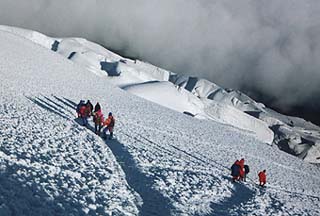
MONTAÑAS
Cotopaxi

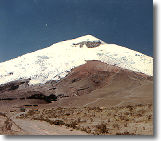
Avenue of the Volcanoes and Cotopaxi
National Park
An hour and a half from Quito, along the Avenue of the Volcanoes, lies
the dominant image on the Ecuadorian national psyche: the perfectly conical
Cotopaxi volcano (5897m), one of the world's highest active volcanos. Most
visitors with a bit of verve at least contemplate making the ascent to its
19,890 foot peak. The volcano is the highlight of Cotopaxi National Park, which
straddles a number of provinces and protects a wide swath of Andean paramo, the
Ecuadorian equivalent of the Arctic tundra, and homeland to the Andean condor
and paramo fox.
Latacunga Loop
Just down the Avenue is the Latacunga Loop, a spectacular area for Andean
trekking. Trekkers who make the effort to get-off-the beaten path will be
treated to incredible vistas, mountain hospitality and possibly a spontaneous
encounter with a llama herder or a gaggle of giggly pigtailed indigenous girls.
Cayambe


Cayambe
(5790 m): the mountain with the most massive glaciers of the earth's tropical
zone, crossed by the equatorial line...
Cotacachi
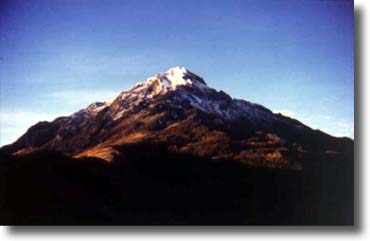
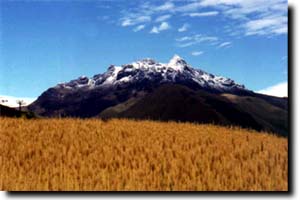
The Cotacachi Volcano is located at the Western
mountain range, being an integral part of the "Cotacachi-Cayapas"
Ecological Reserve.
To reach the summit, which lies at 4,935m (16,200
feet), the climbers must have some experience in rock climbing and be guided by
a professional climber. We do not advise you to go without a guide; you can
become confused, as there are many paths. This volcano is possible to climb in
one day. You have to leave from Otavalo as early as possible, 3 or 4 am.
The most common route is called the Cotacachi Ice
Carriers and is filled with spectacular rock formation. The last 80 meters to
the summit are the most difficult and go straight ahead from the Antennas to the
summit.
Starting at Cuicocha Lake, you will hike up a path to
the base of rocks and snow. From there you will be on a smaller, but more
beautiful path to the snow. The path goes through wild flowers and plants,
rocks, and snow. From the snow, on a clear day, you can see many other volcanoes
and for miles around the mountain. After spending some time up in the
snow, you will return down the mountain.
This is an adventure not to be missed.
Chimborazo
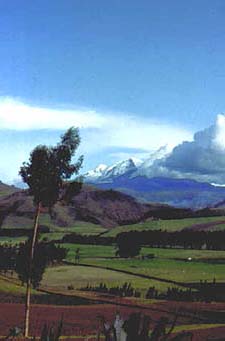
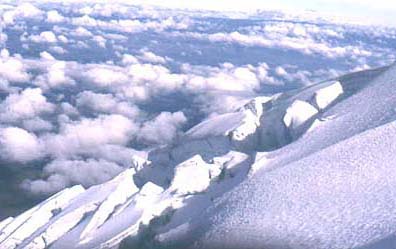
Chimborazo
Ecuador's tallest volcano, Chimborazo (6,310 meters), embraces in its
surroundings centuries-old indigenous communities that have maintained many of
their ancient traditions. This cloud-piercing volcano also provides experienced
climbers with a challenge requiring crampons and ice axes. Those who succeed in
conquering the peak will be rewarded with out-of-this-world views from the
summit.
Antizana

Antizana
Antisana Ecological Reserve encompasses 10 ecological zones ranging from
páramo to lowland rainforest, along with a variety of climates, vegetation, and
wildlife. The Reserve's main attraction is the snow-capped Antisana Volcano, the
fourth highest peak in Ecuador. Antisana affords travelers with numerous
trekking opportunities including the less traveled Guacamayos mountain range,
which extends through the Sumaco
Galeras National Park. Among the many bodies of water in
the Reserve, Micachoca Lagoon is the Reserve's largest. Located at 3900m, it's
an excellent spot for trout fishing. Visitors occasionally spot some of the
Reserve's wildlife such as puma, white-tailed deer, the Andean fox, and the
Andean condor.
There are two ways to access the Reserve. Coming from Quito, go to Pintag
and then continue on a rough road through several villages for approximately 45
km. When coming from Lago Agrio, go through Papallacta, Cuyuja, Baeza, and
continue to the entrance in Cosanga.
Volcan Tunguragua

